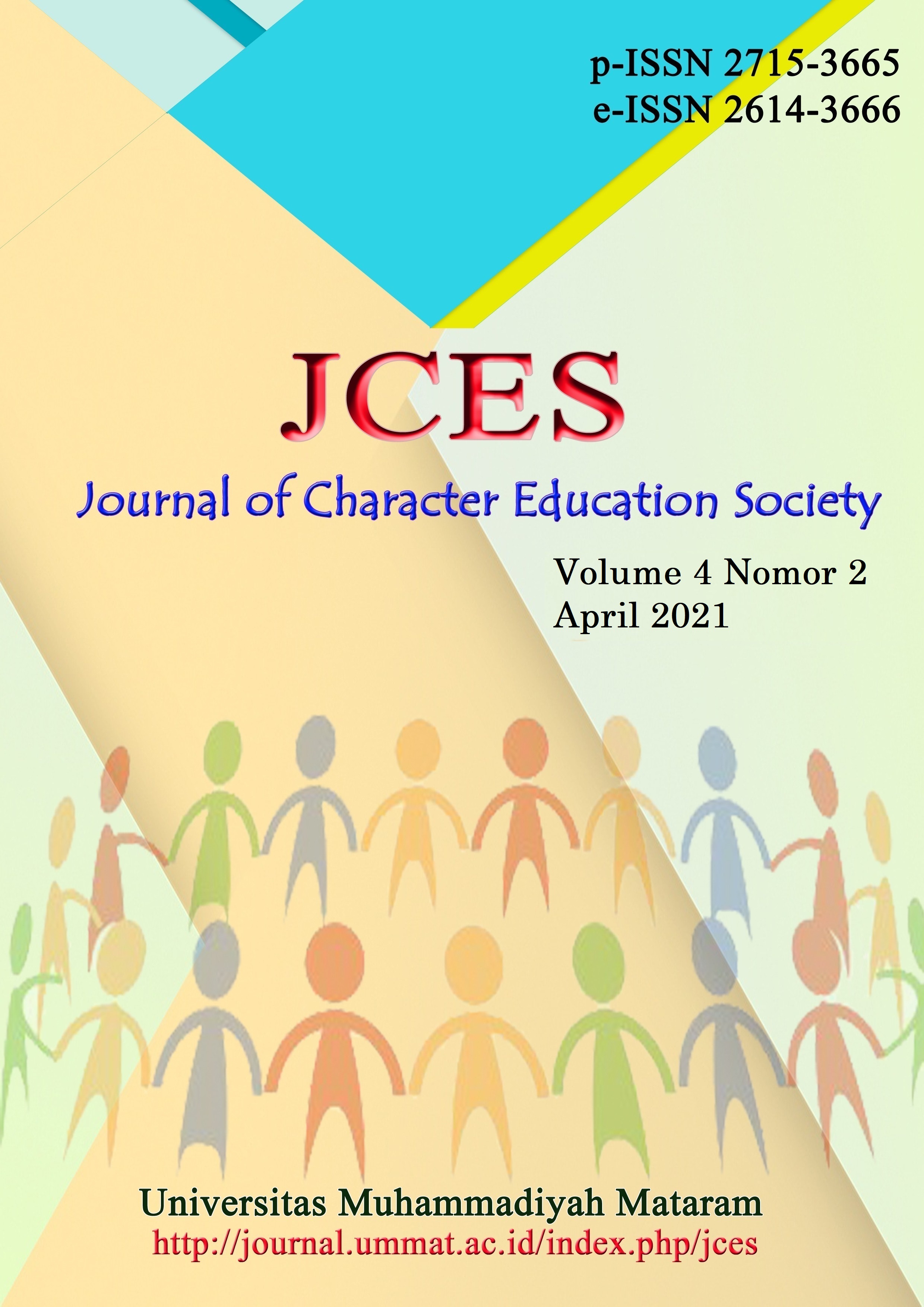OPTIMIZATION OF THE HEALTH OF MOTHER AND CHILDREN (KIA) THROUGH PREGNANT WOMEN CLASS COMMUNITY CARE AND PUBLIC VISITS
DOI:
https://doi.org/10.31764/jces.v4i2.4132Keywords:
Community Care, Education, Class for Pregnant Women, Postpartum Visits.Abstract
Abstrak: Pemeriksaan kesehatan pada lingkup ibu dan anak salah satunya adalah pemberian asuhan pada kehamilan yaitu dengan melakukan kelas ibu hamil, serta melakukan asuhan kunjungan ibu nifas.Tujuan asuhan ini untuk memonitoring kesehatan pada ibu serta menjalin komunikasi dengan ibu, agar ibu merasa lebih dekat dengan petugas kesehatan sehingga dalam bisa lebih intens dalam memberikan edukasi kepada ibu. Kegiatan ini dilakukan secara langsung kepada ibu yaitu dilakukan pada saat kelas ibu hamil dimana ibu hamil bisa berkumpul serta berbagi pengalaman dengan ibu hamil lainnya, serta petugas tetap bisa memberikan edukasi dan pemeriksaan dalam suasana yang lebih santai, serta melakukan kunjungan langsung kepada ibu yang baru melahirkan dengan kondisi Riwayat resiko tinggi, sehingga bisa lebih memonitoring kondisi ibu serta bisa memberikan edukasi mengenai kebutuhan nifas dan menyusui secara lebih intens. Dari hasil kegiatan ini para ibu hamil dan ibu nifas bisa lebih terbuka dan leluasa dengan kondisi yang dirasakannya, dan kita sebagai pemberi asuhan bisa lebih leluasa dan bisa lebih intens dalam melakukan persuasif tentang kesehatan. Kegiatan ini diharapkan dapat terus dilanjutkan terutama untuk ibu hamil ataupun ibu nifas beresiko agar bisa memonitoring kondisi kesehatannya.
Abstract: One of the health checks at the scope of mothers and children is to provide care for pregnancy, namely by conducting classes for pregnant women, and conducting postpartum care. so that they can be more intense in providing education to mothers. This activity is carried out directly to mothers during pregnancy classes where pregnant women can gather and share experiences with other pregnant women, and officers can still provide education and examinations in a more relaxed atmosphere, as well as make direct visits to mothers who have just given birth. with a history of high risk conditions, so that they can better monitor the condition of the mother and can provide education about the needs of childbirth and breastfeeding more intensely. From the results of this activity, pregnant women and post-partum mothers can be more open and free with the conditions they feel, and we as caregivers can be more flexible and can be more intense in doing persuasive about health. This activity is expected to continue to develop, especially for pregnant women or at risk for postpartum mothers so that they can monitor their health conditions.
References
Achyar, K., & Rofiqoh, I. (2016). Pengaruh Kunjungan Nifas Terhadap Komplikasi Masa Nifas Di Wilayah Puskesmas Sokaraja 1 Kabupaten Banyumas. MEDISAINS: Jurnal Ilmiah Ilmu-Ilmu Kesehatan, 14(2), 59–64.
Ambarwati, A. (2011). Asuhan Kebidanan Nifas. Nuha Medika.
Falah-Hassani, K., Shiri, R., Vigod, S., & Dennis, C. (2015). Prevalence of postpartum depression among immigrant women: A systematic review and meta-analysis. Journal of Psychiatric Research, 70, 67–82.
Febrina, S., & Aryani, F. (2018). Efektifitas Kelas Ibu Hamil sebagai Upaya Peningkatan Sikap dan Pengetahuan Ibu Tentang Post Partum Blues. Prosiding Seminar Nasional Vokasi Indonesia, 40–46.
Fibriana, A. I., & Azinar, M. (2016). Model Kelas Ibu Hamil untuk Pemetaan Risiko Kehamilan dan Pencegahan Komplikasi Persalinan. Jurnal Abdimas, 20(1), 11–18.
Fuada, N., & Setyawati, B. (2015). Pelaksanaan Kelas Ibu Hamil di Indonesia. Indonesian Journal of Reproductive Health, 6(2), 67–75.
Hidayat, S. (2013). Kecemasan Ibu Hamil Dalam Menghadapi Proses Persalinan. Wiraraja Medika: Jurnal Kesehatan, 3(2), 67–72.
Iyengar, K. (2012). Early postpartum maternal morbidity among rural women of Rajasthan, India: a community-based study. Journal of Health, Population, and Nutrition, 30(2), 213–225. https://doi.org/10.3329/jhpn.v30i2.11316
Iyengar, K., Yadav, R., & Sen, S. (2012). Consequences of maternal complications in women’s lives in the first postpartum year: a prospective cohort study. Journal of Health, Population, and Nutrition, 30(2), 226–240. https://doi.org/10.3329/jhpn.v30i2.11318
Kemenkes RI. (2014). Pedoman Pelaksanaan Kelas Ibu Hamil. Direktorat Jenderal Bina Gizi dan KIA, Kementrian Kesehatan RI.
Lucia, S., Purwandari, A., & Pesak, E. (2015). Pengaruh Kelas Ibu hamil terhadap pengetahuan tentang persiapan persalinan. JIDAN: Jurnal Ilmiah Bidan, 3(1), 61–65.
Mayasari, S. I. (2018). Model Edukasi Family Centered Maternity Care (Fcmc) dalam Keberhasilan Ibu Menyusui Berbasis Pelayanan Homecare di Desa Sambigede Kec. Sumberpucung. Jurnal Kesehatan, 5(2), 1–9.
Rofi’ah, S., Widatiningsih, S., & Chunaeni, S. (2020). Optimalisasi Kelas Ibu Hamil Sebagai Upaya Peningkatan Kesehatan Masa Kehamilan. LINK, 16(1), 42–48.
Sasnitiari, N., & Puspitasari, D. (2018). Hubungan Keikutsertaan Ibu Dalam Kelas Ibu Hamil Dengan Pengetahuan Dan Sikap Terhadap Tanda Bahaya Dalam Kehamilan Di Kota Bogor. Jurnal Kesehatan Reproduksi, 8(2), 175–185.
Yonne, A. (2010). Hubungan Karakteristik Ibu Hamil Trimester III dengan Kecemasan dalam Menghadapi Persalinan di Poliklinik Kebidanan Dan Kandungan Rumah Sakit X Jakarta. Majalah Keperawatan UNPAd, 12(1), 38–48.
Downloads
Published
Issue
Section
License
Authors who publish articles in JCES (Journal of Character Education Society) agree to the following terms:
- Authors retain copyright of the article and grant the journal right of first publication with the work simultaneously licensed under a CC-BY-SA or The Creative Commons Attribution–ShareAlike License.
- Authors are able to enter into separate, additional contractual arrangements for the non-exclusive distribution of the journal's published version of the work (e.g., post it to an institutional repository or publish it in a book), with an acknowledgment of its initial publication in this journal.
- Authors are permitted and encouraged to post their work online (e.g., in institutional repositories or on their website) prior to and during the submission process, as it can lead to productive exchanges, as well as earlier and greater citation of published work (See The Effect of Open Access).

